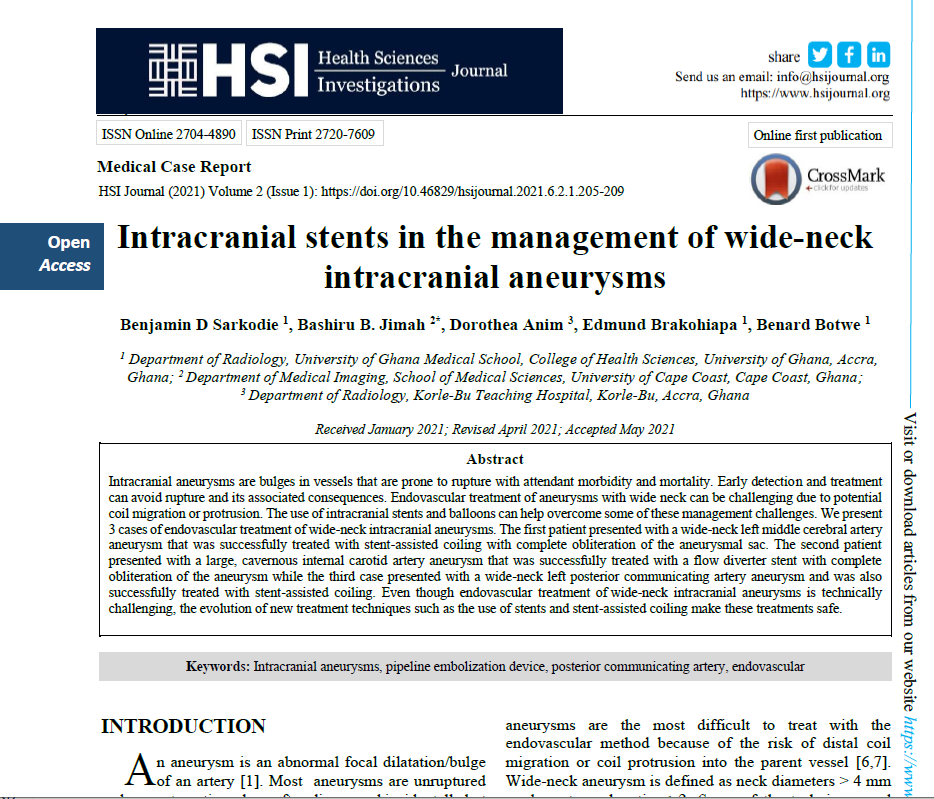Intracranial Stents in the management of Wide-neck intracranial Aneurysms
Intracranial Stenting
Abstract
Intracranial aneurysms are bulges in the vessels that are prone to rupture with attendant morbidity and mortality. Early detection and treatment can avoid rupture and its associated consequences. Endovascular treatment of aneurysms with wide-neck can be challenging due to potential coil migration or protrusion. The use of intracranial stents and balloons can help overcome some of these management challenges.
We present 3 cases of endovascular treatment of wide neck intracranial aneurysms .The first patient presented with a wide neck left middle cerebral artery (MCA) aneurysm that was successfully treated with stent assisted coiling with complete obliteration of the aneurysmal sac. The second patient presented with a large cavernous internal carotid artery (ICA) aneurysm that was successfully treated with a flow diverter stent with complete obliteration of the aneurysm while the the third case presented with a wide neck left posterior communicating artery (PCOM) aneurysm and was also successfully treated with stent-assisted coiling. Even though endovascular treatment of wide-neck intracranial aneurysms is technically challenging, the evolution of new treatment techniques such as the use of stents and stent-assisted coiling make these treatments safe.


